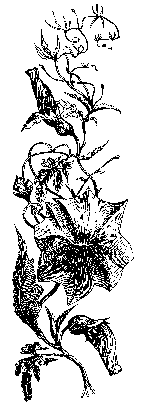


is for Catnip–
the purrfect remedy
This hardy perennial shows up in and around the garden as if by magic. The softly scalloped gray-green leaves and musky-minty aroma give testament to the adaptability of this wild, prolific, and well-known feline inebriant. Catnip is tolerant of shade, drought, and bitter cold, surviving late snowmelt, itinerant lawn mowers, and cats gone wild. I suggest that if you find it and decide to transplant it, do not put it into your garden beds unless you want a bed of just catnip; like most mints, it spreads like crazy. Like other mints, I do recommend splitting up a large specimen in the fall and planting it in several locations. That way, your cat can pick their own personal plant to chew on, roll in, and sleep under, and you can have yours. That’s how it works at my house anyway.
Gently, Now
Humans can use catnip, too, if you can manage to pick off the cat hairs. First, let me say that pregnant women should not use catnip, as it is too stimulating to the uterus; in fact, catnip tea can bring on delayed menstruation. One very good (and safe) home remedy is a tea for PMS symptoms. From my own experience and observation, this is a very good tea for teenaged women because not only does it relieve the symptoms of bloating and cramps, it’s also a mild sedative. Besides, what parent doesn’t need a break from their daughter’s raging hormones? (Probably wouldn’t hurt the lads either—they have hormones too, and who isn’t affected by the moon?) Crumble the dried herbs before measuring, and be sure the ginger is in tiny pieces.

Moon Cycle Tea
4 cups dried catnip leaves
2 cups dried peppermint or spearmint leaves
1 cup dried alfalfa leaves and flowers
½ cup dried wild ginger root
Mix the herbs thoroughly in a large bowl, then place in a glass jar to store and label. To make the tea, steep 1 rounded teaspoon herb blend with 1 pint boiling water for 5 minutes; strain into a cup, and sweeten with honey if desired. If you can’t find wild ginger root for the recipe, substitute with dried Asian ginger root pieces or just a pinch of dried powdered ginger to a single cup of tea.
Kid’s Stuff
A simple catnip tea can be used to relieve the symptoms of a cold accompanied by fever. If using for children’s stomachache or diarrhea, or infant’s colic, combine the catnip with fennel seed or chamomile flowers and make a very mild tea, remembering not to give honey to babies under one year old. Boil a pint of water and add a teaspoon of dried catnip and a pinch of fennel, and steep for only five minutes; strain and very lightly sweeten. A child’s dose of this tea is anywhere from a few spoons at a time up to a half a cup, depending on body weight; please use common sense with this. Don’t make the tea too strong or administer in large doses, as this antispasmodic herb can turn into its emetic evil twin, and it will be your fault the poor kid vomits all over everything, including you.
Even big kids can use catnip tea. I have sipped it to help relieve headaches; you can even lay a catnip compress to the forehead for this as well. Just make a strong tea and dip a soft cloth into the warm brew, wringing it out and laying it across the forehead, repeating a few times as the cloth cools. If there is eyestrain involved, lie down and relax with this compress laid across closed eyes. It’s very refreshing. You can also sip the mild tea to lull yourself to sleep.
Something Sweet from the Trolley, Dear?
Catnip leaves may be candied and used as an after-dinner digestive. The procedure is simple and can be used for any number of edible herbs and flowers. It’s a fun, messy project for involving children too. Any leftovers can be stored in an airtight container. First, gather several stems of catnip, remove the nicer leaves with a leaf stem attached, and gently brush clean—no need to wash. Next, have a wide, shallow dish of powdered sugar ready. Whip up an egg white with a drop or two of water until soft peaks form; give the leftover raw yolk to your cat. Using a soft, new paintbrush and holding on to the stem, completely paint each leaf with egg white, then sprinkle with or dip into the sugar, shaking off the excess. Set to dry on a wire rack, which can take a few hours. Then serve on a pretty plate after your dinner of chicken and dumplings or other rich comfort food.
Mee-yow!